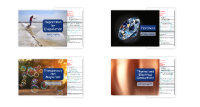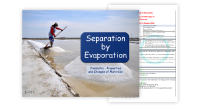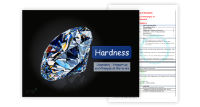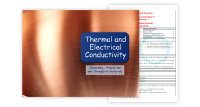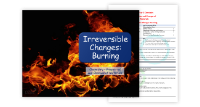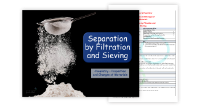Dissolving, Mixtures and Changes of State
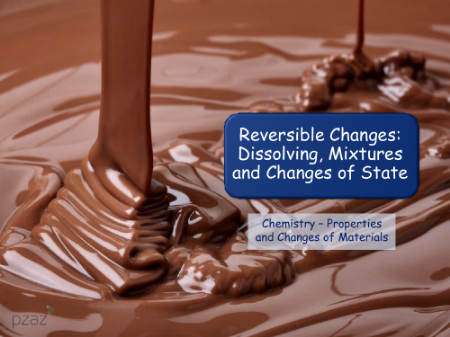
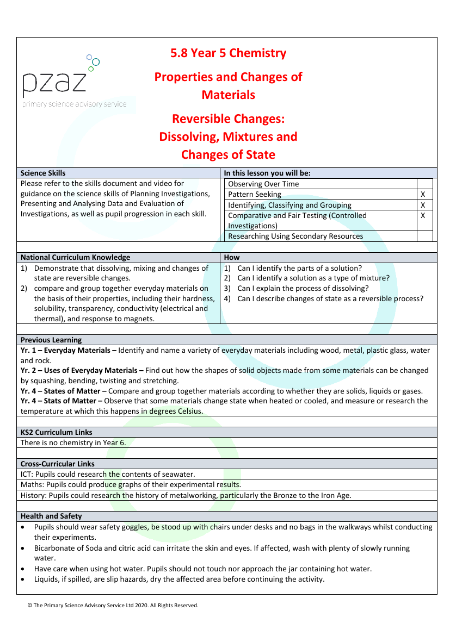

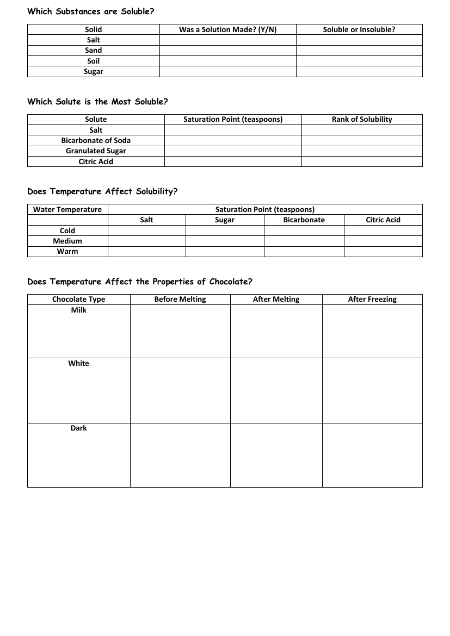
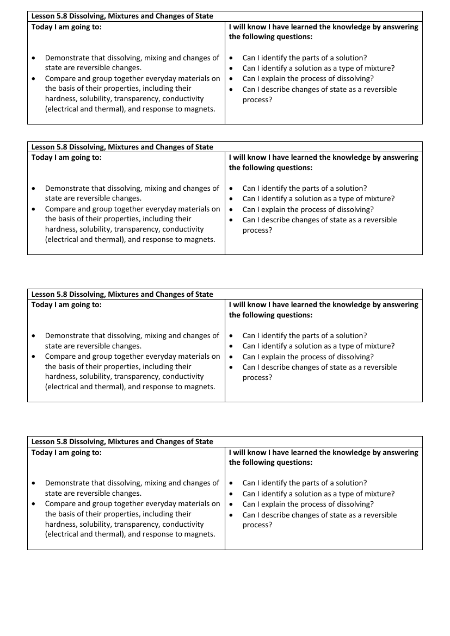
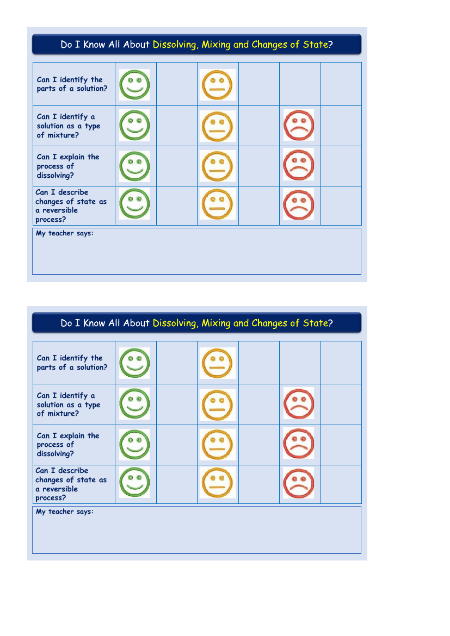

Science Lesson Description
This lesson focuses on teaching pupils how to demonstrate that dissolving, mixing, and changes of state are reversible changes. They will learn how to compare and group everyday materials based on properties such as hardness, solubility, transparency, conductivity, and response to magnets. This lesson covers topics learned in previous years including states of matter, properties of everyday materials, and how to change the shape of solid objects.
The cross-curricular links include ICT, where pupils can research the contents of seawater, and Maths, where pupils can create graphs of their experimental results. Additionally, pupils can learn about the history of metalworking and the transition from Bronze to Iron Age. Some common misconceptions, such as pure orange juice being a pure substance and air being a single substance, will be corrected in this lesson.
Keywords
- Solute
- Solvent
- Solution
- Dissolving
- Soluble
- Insoluble
- Saturated
- Mixture
- Reversible
Influential Scientists
- Mary Maynard
- Daly
- Linus Pauling
- Rosalind Franklin
- Stephanie Kwolek
Important Lesson Guidance
Citric acid and bicarbonate of soda are needed for the activity and can be obtained from a local secondary school or online. Bicarbonate of soda can also be purchased from a local supermarket.
Activity: Making a Solution
In this activity, each pupil in the group will be given a clear plastic cup and a solid such as salt, sugar, sand, or soil. They will fill the cup with half water, add one teaspoon of the solid, and observe if the solid dissolves. The group will share their results and fill in the table to determine if the solid is soluble or insoluble.
Activity: Solubility of Solutes
In this activity, each pupil will have their own cup, solute (salt, bicarbonate of soda, granulated sugar, or citric acid), and a set of measuring cylinders. They will measure 30ml of water, add a flat teaspoon of the solute, and stir well. The pupils will observe the water to see if the solute has dissolved and repeat the process until the saturation point is reached. The pupils will record their results and rank the solubility of each solute.
The science behind this activity is explained by the solutes moving into the gaps between water particles when they dissolve. Once the spaces are filled, no more solute can dissolve and the saturation point is reached. The pupils will learn that the four solids being tested are solutes and the water is the solvent.

